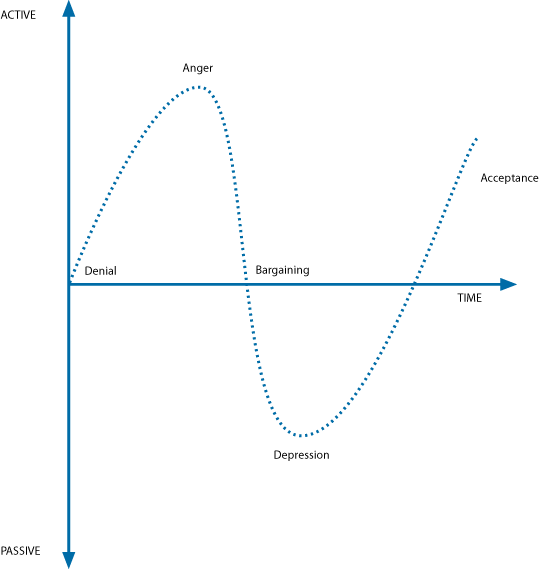Unique Needs of the Suddenly Unemployed
Reactions to the news of sudden unemployment, whether through redundancy or dismissal, are as varied as the individuals affected. Emotional reactions can range from shock and disbelief to anger and resentment. Of course, there is no set template for how an individual will react to news of their job loss.
Reactions are dependant on an array of variables including, age, length of service, employment prospects, financial security, presence of dependants, personality and coping skills. In order to work effectively with someone coping with unemployment, a counsellor needs to be clear about the unique impact the loss has had and is continuing to have on the individual. Nonetheless, theoretical models, outlining the stages of loss can provide a helpful framework from which more individualised approach can evolve.
As a counselling professional, you are likely to be familiar with the well documented, Kubler-Ross (1969) model of stages of grief (see figure below).
These stages may not necessarily occur in order, however, the emotional wave that an individual experiences during grief is likely to share some features with the process as mapped above.
Sudden job loss, like any loss, will likely elicit a grief response. The extent of that response will be dependant on a variety of individual factors, as discussed above. Thus, we can expect in our clients a series of emotional reactions as they progress through the transition.
Birkel & Miller (1998) suggests that the emotional manifestations of job loss follow a similar pattern to the stages Kubler-Ross identified as typical of a grief response to death and dying. Birkel & Miller (1998) describe the emotional wave (or e-wave) of unemployment to illustrate the process.
The e-wave exemplifies the typical emotional cycle of someone experiencing unemployment. It is important to note, however, that individuals may not necessarily follow this pattern exactly.
“Here’s an overview of how the e-wave works. When you get the news that you’ve been terminated, this sudden change in your life pitches you into an ocean of emotion. As you tumble from wave to wave, you experience shock and denial, fear and panic, anger, bargaining, depression and temporary acceptance.
Just when you think you’ve reached the trough of the wave, you begin to climb up the crest of another wave. The cycle continues until you learn to positively channel, rather than avoid, your real feelings. Once you are able to front and manage your e-wave emotions, you can navigate your way through the stormy waters and, eventually, safely reach the shore.”
Source: Birkel & Miller, 1998, p.35


